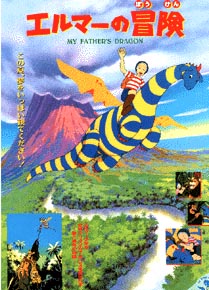|
|
Wonder 3
 | 
 |
 |
6/6/1965 - 6/27/1966  TV series TV series  52 episodes 52 episodes  Mushi Productions/Fuji TV Mushi Productions/Fuji TV
|
| | HATA'S ROLE |
Animation
Episode director:
#28: Lightning valley
#40: Secret of the grand piano
Episode director, Script:
#50: Clobber 'em with the strange machine
|
| STAFF |
Animation: Nakamura Kazuko (Bokko), Matsuo Shingo (Pukko), Sugiyama Taku (Hoshi Hikari), Miwa Kôki (Nokko),
Ônuma Nobuo, Tezuka Osamu, Hata Masami, Ochiai Masamune, Tsukioka Sadao, Okaoi Nobuhiro, Kumano Motoo, etc.
Original Idea/General Director: Tezuka Osamu
Series Director: Sugiyama Taku
Music: Uno Seiichirô
|
|
No details at this time.
|
|
Gokû's Big Adventure
 | 
 |
 |
1/7/1967 - 9/30/1967, Saturdays 7:00 - 7:30 PM  TV series TV series  39 episodes 39 episodes  Mushi Productions/Fuji TV Mushi Productions/Fuji TV
|
| | HATA'S ROLE | |
Episode director:
#3: Public priest no. 1
#7: Love even the garbage
#9: What the heck?
#10: Taken by a heart
#13: The king is a ghost
#22: Dragon's claw
#33: I'm a hero
#34: Man-eating jungle
|
| STAFF | |
See Sub Rosa entry for credits
|
|
The series which replaced Atom. The second color TV anime. With super-fast action, clever art direction,
and a mix of sophistication and silliness, this is surely one of the most unique and artistically interesting
series to emerge from the first decade of TV anime history. Interestingly, Shigeru Yamamoto would work under Hata
as animation director again 14 years later on The Legend of Sirius.
The group of Hata's episodes and
Dezaki's episodes are easily the best in the series, with Hata's best episode being #9, "What the heck?"
(in Japanese: Hatena? Hatena?), the only episode in the series with literally no storyline, only non-stop,
all-out gags, gags and more gags. The series as a whole shows a general proclivity for nonsense and chaos of this
sort, and several other episodes do a wonderful job of pushing story aside in favor of gags, but this episode in
particular seems to be the one in which director Sugii Gisaburô's conception of the series was most
fully realized.
#3 was supposedly the last episode still following the original manga (#4, by Dezaki, is by far the best
episode in the series), but with all the good gags typical of Hata's episodes, I really wonder...
#7 features a salamander character reminiscent of Mabuse in The Legend of Sirius, but
emphasizes story rather than gags.
#9, mentioned above, makes the leap to no storyline whatsoever,
and is filled to the brim with a cornucopia of imaginative visual gags.
#10 runs a close second to this episode,
but strikes a more conventional balance between storytelling, action and gags, and is one of Hata's best creations.
#13 again features a number of good gags, but by this point in the series, storyline begins to take over again, and the gags
begin to be edged out. The reason for this is presumably that the ratings which Gokû had inherited from Atom
had dropped to the teens by this point, and the station was pressuring Mushi Pro to adhere to more conventional
defeat-the-villain-type storylines. This is the tendency which ultimately leads to the "Monster Confederacy" episodes,
where, as per formula, a group of evil monsters who are out to take over the world send a different monster every episode
to defeat the good guys.
Hata directed the first, #22. The mood of levity which Hata brings to this episode rescues it to a degree,
but there are disturbing tendencies in these later episodes, like the repitition of animation from previous episodes or
the same episode - eg, using the same sequence of Goku lunging towards a monster sometimes three, four times in the same episode -
which are a major disappointment because they are an obvious compromise of the goals with which the series set out.
In #33, Goku & gang intercede on the part of an inept prince by defeating an evil magician who was
plotting to dispose of the prince to take over his kingdom. Hata created another ludicrous 'child man'-type character of this
sort in 1001 Nights.
#34, Hata's last episode, is one of the most successful non-gag episodes in the series. Though
the humor is gone, Hata never allows the episode to make the blunder of taking itself seriously like many of the other episodes, and the void of humor is filled by fast-paced action, taut directing and colorful and interesting bad guys.
Overall, the series would have a little bit more to go for it
if the rest of the humorless late episodes had been done as well; but as it stands, the overwhelming majority of what makes this series of interest comes approximately within the first 13 episodes,
before the animators had been affected by the demands of the station. Interestingly, the inverse happened to Sugii's next TV series,
Dororo: the series was too serious, so they were ordered to turn it into a comedy after the first season. And it was still cancelled.
|
|
Knight of the Ribbon
 | 
 |
 |
4/2/1967 - 4/7/1968  TV series TV series  52 episodes 52 episodes  Mushi Productions/Fuji TV Mushi Productions/Fuji TV
|
| | HATA'S ROLE | |
Episode director:
#16: Chink and Collette-chan
|
| STAFF |
Original Idea/Series Director: Tezuka Osamu
Establishment: Akabori Mikiharu, Maruyama Masao
Series Director: Katsui Chikao, Akabori Mikiharu
Layout: Fujimoto Shirô
Animation Directors: Nakamura Kazuko, Miyamoto Sadao
Music: Tomita Isao
"Idea Man": Kume Minoru
|
|
One of the more internationally widely syndicated early Mushi Pro series, this was one of the last Mushi Pro TV series based on a manga by
Osamu Tezuka. After this point Mushi Pro became obliged to animate works by other manga artists.
It also has the distinction of being the first shôjo anime.
Hata's only episode tells of a wandering puppeteer who arrives in town one day and puts on a free show for the children.
As soon as the show is finished, he tells them, "Next time, bring money!" That night, while everyone's sleeping, he goes from rooftop to rooftop stealing money from
people using his puppet Collette. Sapphire's guardian angel, Chink (wisely called something else in the English
dub), who had meanwhile fallen in love with Collette at first sight earlier that day, decides to pay her a visit, but finds the wagon empty, instead discovering
the puppeteer in the act of stealing a coin chest from the greedy banker. Before Chink can turn the puppeteer in, the banana-nosed
bad guy who has it in for Sapphire captures the puppeteer and forces him to put on a play in the castle to reveal Sapphire's
true gender. Chink foils his scheme by dressing as one of the puppets and scaring the puppeteer off. In the chase
that ensues, the puppet wagon hits a rock and crashes, bursting into flames. Chink saves Collette
and her companions from the blaze just in the knick of time, but the puppeteer thinks he's lost everything, and is crushed.
Chink returns his puppets to him, and the kind gesture and relief of finding his puppets intact causes him to have a change of heart. He gives up his devious ways
and from then on puts on free puppet shows for the children.
In this episode Hata sneaks in a reference to Gokû by having
the puppeteer handling puppets of Tatsuko and Gokû at the beginning of the episode (pictured above).
This episode in fact feels quite different from the other episodes in the series,
so it's not difficult to see why Hata was not assigned more than one episode.
It is lacking in the sort of intrigue, swashbuckling action and plot complexity which characterizes most of the other episodes, though it's certainly interesting in its own way.
Hata's talents seem more suited to comic or fantastic material like Gokû. This episode was broadcast on July 16, 1967 in the period between episodes 22 and 33 of Gokû.
|
|
Detective Brat Pack
 | 
 |
 |
2/1/1968 - 9/26/1969, Tuesdays 7:00 - 7:30 PM  TV series TV series  35 episodes 35 episodes  Mushi Productions/Fuji TV Mushi Productions/Fuji TV
|
| | HATA'S ROLE | |
Episode director, Animation Assistance:
#6: Mysterious Castle of the Oni Mask
|
| STAFF |
Series Director: Hayashi Shigeyuki (Rin Tarô)
Original Work: Edogawa Ranpo
Producer: Mori Masaki
Script: Abe Keiichi, Katô Ariyoshi, Tsuji Masaki, Kuroshima Iwao, Omiya Kei, Okazaki
Kunihiko
Episode Directors: Rin Tarô, Seyama Yoshifumi, Dezaki Osamu, Hirata Toshio,
Katsui Chikao, Kitano Hideaki, Mori Masayuki, Murano Moriyoshi, etc.
Music: Yamashita Yoshio
|
|
No details at this time.
|
|
Animal 1
 | 
 |
 |
4/1/1968 - 9/30/1968, Mondays 7:30 - 8:00 PM  TV series TV series  27 episodes 27 episodes  Mushi Productions Business Division/Fuji TV Mushi Productions Business Division/Fuji TV
|
| | HATA'S ROLE | |
Episode director:
#2: Die! Wrestling
|
| STAFF |
Based on a wrestling manga by Kawasaki Noboru
Directing Supervisor: Sugiyama Taku
Animation Director: Miyamoto Sadao
Art Layout: Kageyama Isamu
Music: Itsuki Hideki
Episode directors: Sugiyama Taku, Hata Masami, Tomino Yoshiyuki, Takahashi Ryôsuke, Nishimaki Hideo, Oda Ryô,
Minamikawa Hiroshi, Akabori Mikiharu, Saide Mitsubu, Uchida Yukihiko
Script writers: Yamazaki Tadaaki, Yukimuro Jun'ichi, Tsuji Masaki, Kawasaki Yasutami
|
|
Animal 1 offers the familiar setup of boy-endowed-with-talent-for-sports-awakens-to-
his-talent-and-joins-the-school-_(blank)_-club-
and-wins-the-championship (eg, Make way for Master Kunimatsu) with olympic wrestling filling in the blank. This obviously evinces a
wave of interest in wrestling following the 1964 Tokyo Summer Olympics, where Japan won numerous gold medals in freestyle and
greco-roman wrestling.
The series is in black and white for economic reasons alone. Color TV series had already been aired as early as 1967.
Again, Hata's episode stands out from the rest, but not quite in the way I expected. Chief director Sugiyama set the pace
in the first episode, shaping an unpromising series produced by the business department of
Mushi Pro -- not the main studio! -- into something not entirely unwatchable. Episode 1 emphasizes
fast cutting and action rather than drama, with a light atmosphere and a lot of content squeezed into the episode.
Overall it resembles Hata's Gokû episodes. That's why it's so surprising that Hata's episode, #2, seems so radically
different. It seems to deliberately veer away from this type of directing, which is more manga-like, to
try for a more dramatic/serious approach. The story itself develops a very narrow theme, but one which is central
to the series: the hero's discovery of his interest in wrestling and his determination to join the club. The cutting
and pacing of the episode seem to reflect this specific focus, with a lot less information packed into the episode
and each scene very carefully thought out for its place in the whole episode. The episode strikingly
captures the dramatic importance of this portion of the story, though the seriousness even becomes a little much at times,
bordering on a parody of itself. Clearly a development can be seen here away from the cartoony style of Gokû
towards a style emphasizing orderly development of a theme and heavy drama.
|
|
A Thousand & One Nights
 | 
 |
 |
6/14/1969  Movie Movie  128 minutes 128 minutes  Mushi Productions (distributed by Nihon Herald Eiga) Mushi Productions (distributed by Nihon Herald Eiga)
|
The first Japanese animated film aimed at an adult audience. Late in 1986, a discussion session hosted by producer TOMIOKA Atsushi was held for each of the Animerama films, and included as a second audio track on the LD re-issues of these films by Pony Canyon. Watching 1001 Nights were director YAMAMOTO Eiichi,
character designer/art director YANASE Takashi, and key animator MIYAMOTO Sadao. These discussion are an invaluable resource which have provided me with the following
anecdotes regarding who was responsible for what in these films. As in Cleopatra, one of the things which makes these Animerama films unique is their "one animator - one character" approach, in which one animator is wholly reponsible for animating one particular character throughout the film. The result blends together better than might be expected.
Miyamoto did the protagonist Aldin and the antagonist Badli. NAKAMURA Kazuko did Miriam, Jalis and Aslan. Hata animated at least Shaliman,
Hazlam and the fat man on the ship. SUGII Gisaburô did the dancing thieves scene in Alibaba's cave. Yamamoto stated that Sugii was so good at doing erotic scenes that he was given the job
of animating most of them in both 1001 Nights and Cleopatra. This was as much of a surprise to Sugii as it was to anybody else, coming from the director of the sublimely cartoony Gokû's Big Adventure. These are the unmistakable love-scenes consisting wholly of highly suggestive, flowing, intermeshing lines. DEZAKI Osamu did the scene in the desert where Aldin attacks Badli,
a scene filled the cuts and camera angles which would later become distinctive of Dezaki's oeuvre. TEZUKA Osamu himself animated several sequences, including the sequence beginning from the point where the amazoness on the island transforms into a snake in the bedchamber to where
Aldin jumps off the cliff, as well as the sequences where the female genie transforms and the lions in the lion pit. The genies themselves,
whose parlay is immediately identifiable (to a Japanese native) as the traditional manzai comic style, were animated by TSUKIOKA Sadao, a veteran who started out during the
Nichidô era and whose representative work is Ôkami Shônen Ken. Miyamoto commented that Nakamura and he put a tremendous amount of work and energy into the love scene
of Jalis and Aslan. The very last shot of Aldin walking off was animated by SEYAMA Shinji, a promising animator who sadly passed away only a few years after 1001 Nights.
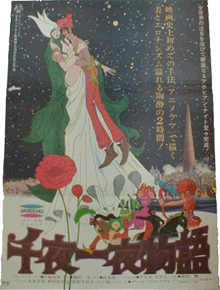
|
|
Tomorrow Joe
 | 
 |
 |
4/1/1970 - 9/29/1971  TV series TV series  79 episodes 79 episodes  Mushi Productions/Fuji TV Mushi Productions/Fuji TV
|
| | HATA'S ROLE | |
Episode director:
#5: First for tomorrow
#14: No KO gong yet?!
#31: Fly, pro boxer
#74: Departure today
|
| STAFF |
Director: Dezaki Osamu
Animation Director: Sugino Akio
|
|
A smash hit TV series predating Rocky about a boxer who fights his way to the top,
based on a manga by Chiba Tetsuya. This was Osamu Dezaki's debut as TV series director, and it was the
work which 'catapulted him to fame' as the first auteur in anime history.
It still ranks as one of the most popular anime of all time over in Japan.
The episode which brings us the first instance (of many) of the most famous image from this series, that of Joe smacking
his opponent of the day with a so-called "cross counter", happens to occur at the end of Hata's episode #14, the episode featuring of the
first bout between Joe and his arch-rival Rikiishi Tôru. (the shots in the above animation are from this episode) It is easily the most
satisfying of Hata's four in this series, and indeed one of Hata's best, #5 leaving little impression and his other two episodes, #31 and #74, being 'mere' comic releif
episodes with a surfeit of inspid silly antics, indicative of the fact that Hata had by this time presumably acquired his label of director of
children's fare. #31 was produced soon after Cleopatra had been released, and #74 while Hata was acting as chief director of
Stories of Andersen.
|
|
Cleopatra
 | 
 |
 |
9/15/1970  Movie Movie  112 minutes 112 minutes  Mushi Productions (distributed by Nihon Herald Eiga) Mushi Productions (distributed by Nihon Herald Eiga)
|
The next Animerama film. The character Antonius was animated by Hata, and Antonius's death scene was drawn by NAKAMURA Kazuko and polished by Hata.
At the discussion session for this film in 1986 were producer TOMIOKA Atsushi, director YAMAMOTO Eiichi, key animator NAKAMURA Kazuko, and recording technician TASHIRO Atsumi.
Hata's scenes evoked laughter and a few comments about Hata, particularly the interrogation scene with the fat
police chief and the frustrated underlings. It seems it was entirely animated by Hata. One person, I forget who, commented how Hata's face became serious and he became completely absorbed when he sat down at the
desk to draw, and how he meticulously planned each of his scenes to get the humor just right. The police-chief in the interrogation scene is sort of reminiscent of the roly-poly guy on the ship in 1001 Nights.
Caesar's dive into the Roman bath, with its accompanying bellow, elicited a laugh from the audience; when prompted by Tomioka who animated Caesar, Yamamoto indicated that it was Hata, though I'm not sure whether to interpret this to mean that he animated Caesar throughout the film.
Other interesting notes: KAMIGUCHI Teruto animated Ionius and Lupa, and it was repeatedly commented how much relish he put into
animating Lupa. AKABORI Mikiharu was the special effects animator, animating things like the water in the second Cleopatra-Caesar love scene. His big scene in the film was the glorious sea battle,
which Yamamoto said he labored arduously on, as did many of these young and driven animators in their own 'big scene'. A most interesting fact was stated by Nakamura (nicknamed Wako-san; she animated Cleopatra), namely that all of the women in the film were animated by women animators.
FURUSAWA Hideo, a veteran of the early age of post-war anime, animated the fascinating Kabuki "Et Tu, Brute" scene, pulling off a visual stunt which could easily have flopped. He was clearly very respected by his colleagues at the discussion. He was also the one who animated the
fight between the blue oni and the giant bird on the island in 1001 Nights.
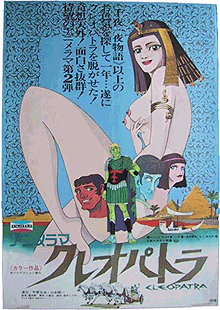
|
|
Make way for Master Kunimatsu
 | 
 |
 |
10/6/1971 - 9/25/1972  TV series TV series  46 episodes 46 episodes  Mushi Productions/Fuji TV Mushi Productions/Fuji TV
|
| | HATA'S ROLE | |
Series Director
|
| STAFF |
Animation Directors: Sugino Akio, Sasakado Nobuyoshi, Arata Toshio
Screenplay: Itô Kôji
Original Work: Chiba Tetsuya
Music: Awano Keiichi
|
|
This anime tells the story of a young tough (Kunimatsu) notoriously skilled in every manner of sport, who
eventually settles down in the Kendo club, which he presumably goes on to lead to the championship.
I have seen episodes 9-12, which join the story right around the point where Kunimatsu joins the Kendo club. Interestingly,
the pivotal episode where he does so was directed by none other than Yoshiyuki Tomino, the creator of Gundam; and a spectacular one it is, full of
the drive and energy one would expect of him. Not having seen more of the series than this small segment, however, I will hold off on
any attempt at characterizing the series overall until I have seen some more.
Mushi Pro anime of this era are to be released on DVD starting late 2001, so if this series is released in full I will
do so at that time.
|
|
Wansa-kun
 | 
 |
 |
4/2/1973 - 9/24/73, 7:00 - 7:30 PM  TV series TV series  26 episodes 26 episodes  Mushi Productions/Kansai TV Mushi Productions/Kansai TV
|
| | HATA'S ROLE | |
Episode Director:
#2: Let's get married, Catherine!
#7: Don't leave me, Midori-chan
#13: When the moon rises, the blood rises (w/Ishikawa Susumu)
Music Sequence Director ("Wansa-kun's mother" & "Stray dog theme"):
#14: Wansa-kun Music Special
|
| STAFF |
Producer: Yamazaki Yoshinori
Planning: Yamazaki Yoshinori, Zuiyô Enterprise
Original work by Tezuka Osamu
Director: Yamamoto Eiichi
Character design: Nagashima Shinji
Written by: Fujikawa Keisuke
Animation: Morita Hiromitsu
Art: Handô Katsumi
Music: Miyakawa Yasushi
|
|
This was the last anime produced by Mushi Pro before it went out of business. Hata started working at TMS just as Wansa-kun was beginning in April, and stayed at TMS until around 1976, when his Sanrio period begins with Little Jumbo.
Not having seen this series, I can't comment on Hata's involvement, but the series may be relased on DVD late in 2001, so
watch this space.
|
|
Wild West Sam
 | 
 |
 |
4/4/1973 - 3/27/1974  TV series TV series  52 episodes 52 episodes  Tokyo Movie Shinsha/Fuji TV Tokyo Movie Shinsha/Fuji TV
|
| | HATA'S ROLE |
Storyboard:
#1: Burn! Sun Boy
#6: Big Stone's First Appearance
|
| STAFF |
Director: Yoshida Mochitsugu
Written by: Suzuki Yoshitake, Yamazaki Haruchika, Itô Kôji, Inoue Satoshi, Kaneko Yutaka, Matsuzaki Yukio
Storyboard: Hata Masami, Mikuriya Kyôsuke, Okabe Eiji, Kuroda Yoshio, Yoshikawa Sôji, Imazawa Tetsuo, Takahata Isao (15, 18), Koizumi Kenzô, Nakamura Tadashi
Episode directors: Mikuryia Kyôsuke, Arata Yoshikata,
Original Work: Kawasaki Noboru and Yamakawa Sôji
Animation directors: Kanishi Takao, Murata Kôichi, Kawauchi Hideo, Araki Shingo, Koizumi Kenzô, Kimura Keiichi
|
|
Possibly the only Western anime TV series (there's also the movie Puss 'n Boots II), this series tells the
story of a boy raised by a gang of outlaw gunmen who are notorious killers, and who gradually rebels against them out
of refusal to do evil.
Having seen the first four episodes, I found there to be a tangible difference between the first episode and the
other three. Part of this is accountable to the common practice of pulling out all the stops in the first
episode, using more cels and generally producing an episode of higher quality than the rest of the series so as to
pull in the the viewers. However, the pacing of each scene and the framing of the shots (using a lot of Eisensteinian montage close-ups)
in episode 1 are impeccably handled and acheive a truly powerful dramatic effect, something which the next few episodes do not do.
Hata's storyboard undoubtedly helped in large part to produce this episode's unique impact. (I haven't seen episode 6)
|
|
Paean to Judo
 | 
 |
 |
4/1/1974 - 9/30/1974, Mondays 7:00 - 7:30 PM  TV series TV series  27 episodes 27 episodes  Tokyo Movie Shinsha/Nihon TV Tokyo Movie Shinsha/Nihon TV
|
| | HATA'S ROLE | |
Storyboard, Episode Director: eps. ?
|
| STAFF |
Director: Yoshida Mochitsugu
Script: Yamazaki Haruchika, Itô Kôji, Inoue Kazushi, Matsuzaki Yukio
Storyboard/Episode directors: Yoshida Mochitsugu, Mikuriya Kyôsuke, Takayashiki Hideo, Hata Masami, Imazawa Tetsuo, etc.
Animation supervisor: Kusube Daikichirô
Animation directors: Kumano Motoo, Kanishi Takao, Kawajiri Yoshiaki, Koizumi Kenzô, Yamaguchi Yasuhiro, Araki Shingo, etc.
Art Director: Kageyama Jin
Music: Takai Tatsuo
|
|
No details at this time.
|
|
First Man Gyators
 | 
 |
 |
10/5/1974 - 3/27/1976, Saturdays 7:00 - 7:30 PM  TV series TV series  77 episodes (2x15 minute stories) 77 episodes (2x15 minute stories)  Tokyo Movie Shinsha/TV Asahi Tokyo Movie Shinsha/TV Asahi
|
| | HATA'S ROLE | |
Episode Director: eps. ?
|
| STAFF |
Written by: Kaneko Yutaka, Kawaishi Hikari, Inoue Satoshi, Matsuoka Seiji, Yamamoto Yû, Araki Shibahisa, Takayashiki Hideo, etc.
Episode Directors: Yoshida Mochitsugu, Okabe Eiichi, Mikuriya Kyôsuke, Sakamoto Ryû, Hata Masami, Saki Makura (Dezaki Osamu), Fukutomi Hiroshi, Imazawa Tetsuo
Animation Director: Kanishi Takao
Art Director: Kobayashi Shichirô
Music; Kamayatsu Hiroshi
|
|
No details at this time.
|
|
Jetter Mars
 | 
 |
 |
2/3/1977 - 9/15/1977, Thursdays 7:00 - 7:30 PM  TV series TV series  27 episodes 27 episodes  Tôei Dôga/Fuji TV Tôei Dôga/Fuji TV
|
| | HATA'S ROLE | |
Episode Director:
#4: Goodbye, little brother!
|
| STAFF |
Original Idea/Layout: Tezuka Osamu
Series Organizer: Maruyama Masao
Screenplay: Tsuji Masaki, Yukimuro Shun'ichi, Suzuki Yoshitake, Yamamoto Yû
Series Director: Rin Tarô
Episode Directors: Hata Masami, Chiba Sumiko (Hirata Toshio), Kurokawa Susumu, Mizusawa Wataru, Sasaki
Masato, Serikawa Yûgo
Character Design Supervisor: Sugino Akio
Animation Directors: Sugino Akio, Mori Toshio, Shingû Akira, Daikuhara Akira
Shikajima Tsuneyasu, Mibu Wataru, Ashida Toyoo
Artistic Director: Mukuo Takamura
Art: Kawamoto Shôhei, Mukuo Takashi, Kubota Norio
Music: Koshibe Nobuyoshi
Theme songs sung by Ôsugi Kumiko
|
|
Jetter Mars has suffered an unfortunate fate, now completely forgotten, and never before released on video.
However, its luck is now turning. The series has been aired on satellite channels in Japan devoted to anime
along with other obscure and hitherto unreleased Hata titles like Animal 1 and Andersen Stories.
There is yet no word of a DVD release.
As the legend goes, the reason for this series looking like a knock-off of Atom Boy
has to do with the fact that it was originally supposed to be Atom Boy.
The series was planned as a continuation of the famous first TV anime, but the producers found out at the last
minute that they did not have the rights to it, and were forced to do a different project.
With no time to prepare a different project, and barely any time before the deadline,
they instead modified the Atom Boy character designs and story just enough to turn them
into what would pass for a different story.
Hence we have a cast of characters, situation and design of the main characters which seems straight out of
Atom Boy, just with minor differences. (The preceding is nothing more than hearsay AFAIK, but
there is no manga version of Jetter Mars, which at least lends some credence to this explanation.)
|
|
Little Jumbo
 | 
 |
 |
9/10/1977  Movie Movie  28 minutes 28 minutes  Sanrio (distributed by Tôhô Tôwa) Sanrio (distributed by Tôhô Tôwa)
|
| | HATA'S ROLE | |
Director (with Hirata Toshio & Yanase Takashi)
|
| STAFF |
Producer: Hatano Tsunemasa
Production Supervisor: Tomioka Atsushi
Original Work & Adaptation: Yanase Takashi
Music: Izumi Taku
Art: Abe Yukio
Animators: Nakamura Kazuko, Yamamoto Shigeru, Akabori Mikiharu, Miwa Kôki, Matsuyama Maya, Taga Shinmi, Takahashi Haruo, Ônishi Tomoko, Kobayashi Junji, Abe Akira
|
|
The first anime feature produced by Sanrio (actual production was started in 1975). This is a colorful, painstakingly animated musical about
a boy and his pet white elephant who one day drift onto a peaceful island which soon finds itself caught between two larger islands at war.
The film is is based on a Yanase Takashi story, like The Bell of Chirin, but stylistically the two couldn't be further apart.
Where Chirin is hard-boiled and realistic, Jumbo is light-hearted and cartoonish,
though underneath it all also treating of a serious theme. Yanase earlier made the film The Kindly
Lion (1970) at Mushi Productions, a film that likewise reveals the darker side of Takashi
"Anpan Man" Yanase. Animated in a vivid, bold style and featuring an original and striking dramatic
form (this film was only the second anime musical, the first being the 1974 Group Tac debut feature
Jack and the Beanstalk), this is a film sure to please children and animation connoisseurs
alike. Unfortunately it's completely unknown outside of Japan.
|
|
The Bell of Chirin (US: Ringing Bell)
 | 
 |
 |
3/11/1978  Movie Movie  46 minutes 46 minutes  Sanrio (distributed by Nihon Herald Eiga) Sanrio (distributed by Nihon Herald Eiga)
|
| | HATA'S ROLE | |
Director
|
| STAFF |
Producer: Tsuji Shintarô
Original Work: Yanase Takashi
Music: Izumi Taku
Art: Abe Yukio
Key Animators: Yamamoto Shigeru, Miyamoto Sadao, Hirata Toshio, Akabori Kanji
Key Assistant Animators: Takahashi Haruo, Handa Teruo, Taga Shinmi, Ônishi Tomoko
Assistant Animators: Nakajima Kaoru, etc.
|
|
A mid-length movie released in Japan as a double-feature with the Sanrio-Murakami Pro. co-production A Mouse and His
Child. A little lamb named Chirin sees his mother killed by a wolf, and sets out to become a wolf himself. A social fable on the dangers of (non)conformity, this movie goes where most
children's anime fears to tread, with a truly sinister mood and serious theme the likes of which are found rarely in anime, much less in children's anime.
Brilliantly economical storytelling and directing, combined with that lovely art and fluid animation which is the calling card of early
Sanrio, make this film a forgotten anime classic. It is Hata's solo feature film directorial debut. After directing Chirin, Hata was occupied for a short while with the Unico pilot, completion of which marks the moment Hata would begin work on his first two full-length feature film directing efforts, The Legend of Sirius, released 1981, and Fairy Florence, released 1985, which would collectively occupy him for the next six years.
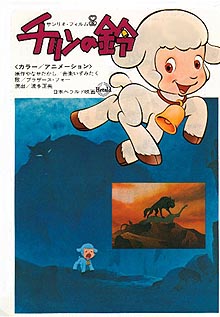
|
|
Unico Pilot: White Wings and Black Clouds
 | 
 |
 |
4/1979  Pilot film Pilot film  26 minutes 26 minutes  Sanrio/assistance from Tezuka Productions Sanrio/assistance from Tezuka Productions
|
| | HATA'S ROLE | |
"Key animator" (with Akabori Mikiharu, Yamamoto Shigeru)
|
| STAFF |
Original Work/Supervisor: Tezuka Osamu
Executive Producer: Tsuji Shintarô
Planning: Tsugawa Hiroshi
Director: Hirata Toshio
Art: Abe Yukio
Music: Takekawa Yukihige, Mickey Yoshino
Animators: Handa Teruo, Takahashi Haruo, Taga Shinmi, Ônishi Tomoko, Miyamoto Sadao
Backgrounds: Ishikawa Yamako, Kaneko Masumi, Yoshida Yôko, Kadono Mariko, Noya Kenji
|
|
This short film was the first in the Unico series. It was followed by the two full-length films which are available in the US under the titles The Fantastic Adventures of Unico and Unico on the Magic Island. The pilot was originally produced for the theater, but was shelved for some reason without being released theatrically, and had to wait for an entire decade to see the light of day. It was released on video in 1989.
Despite being a pilot, the film was made with the utmost craftsmanship, and as a result has a much higher reputation than the two full-length films among anime fans in Japan, due to its taut storytelling, excellent soundtrack, and careful and stylish animation. The pilot retains all its lustre twenty years on, while the same can hardly be said for the other two Unico films.
The story tells of Unico, the little unicorn who is said to bring happiness to humans, but who is cursed to be carried away by the west wind to a different
time and place every time he starts to make humans happy, and the sick little girl he meets one day after he wanders into a town ruined by a huge factory which spews pollution
and death to everything around it. A very important element of continuity links this pilot with the next film Hata was involved in, The Legend of Sirius: of the three key animators, Hata would go on to direct the film, and the other two would go on to be the animation directors. Hence this pilot was in a real sense in fact a pilot for Sirius, the film the creative staff of the pilot worked on immediately after the pilot, and which is stylistically a continuation of the pilot. It also happens to be every bit as great a film. Note: "Key Animator" is written in katakana in Japanese.
|
|
Orpheus of the Stars (US: Winds of Change)
 | 
 |
 |
10/27/1979  Movie Movie  108 minutes 108 minutes  Sanrio Sanrio
|
The credits cite Hata among the 29 "animators", all but two others (Yamamoto Shigeru and Akabori Mikiharu) of whom are
American animators. These three formed part of the small group of Sanrio Eiga staff who travelled to Los Angeles and
worked at the Sanrio studio built on Sunset Boulevard expressly to produce this film, most of whom would go on to play
a central role in the next big Sanrio Eiga film, The Legend of Sirius. There is a note of confusion as to Hata's
role in the film, related to the identity of the enigmatic director TAKASHI. In a 2001 autobiography by veteran animator
Yasuo Ôtsuka, Ôtsuka states at one point in passing that Hoshi no Orpheus was directed by Masami Hata
rather than TAKASHI, contrary to the film's credits and all other published sources. Although the probable answer is simply
that Ôtsuka was citing memory and his editors failed to catch the mistake, a more tantalizing (but unlikely)
possibility is that he has unwittingly unveiled the identity of the mysterious TAKASHI; if Hata did direct the film, that
considerably changes the map of Hata's activity over the six years 1974-1979 during which Orpheus was produced.
The world's first full-length 70mm animated film, it was also Sanrio's most ambitious and expensive film (¥2.6 billion), and an American-Japanese staff of over 170 worked for six
years to produce its 140,000 cels.
Cel Count: 140,000
Production Length: 6 years
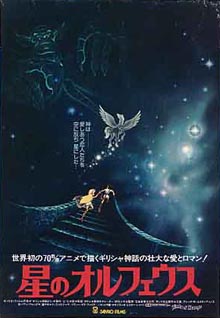
|
|
The Legend of Sirius (US: The Sea Prince
and the Fire Child)
 | 
 |
 |
7/18/1981  Movie Movie  108 minutes 108 minutes  Sanrio (distributed by Sanrio/Nihon Herald Eiga) Sanrio (distributed by Sanrio/Nihon Herald Eiga)
|
| | HATA'S ROLE | |
Director, Screenplay (with Katsura Chiho)
|
| STAFF |
Exec. Producer/Planning/Original Work: Tsuji Shintarô
Producer: Hatano Tsunemasa
Assistant Director: Suzuki Takuo
Music: Sugiyama Kôichi
Art Director: Abe Yukio
Backgrounds: Kiyomizu Kazutoshi, Yoshida Yôko, Notani Kenji, Sasaki Hiroshi, Nagashima Yôko
Character Animation Director: Yamamoto Shigeru
Effect Animation Director: Akabori Mikiharu
Character Key Animation: Taga Shinmi, Takahashi Haruo, Nakajima Kaoru, Gomura Takeshi, Miwa Kôki, Ôhashi Manabu, Kawajiri Yoshiaki, Funada Masako, Hoshikawa Miyuki, Hattori Miwako, Ogawa Satoko, Naitô Manabu
Effect Key Animation: Ônishi Haruko, Yasue Dan, Kondô Hiroyuki, Matsuyama Maya, Senda Yukinari
Character Inbetweeners: Satô Masami, Kubokawa Miaki, Matsuzaki Ikue, Yuasa Nobuko, Tanaka Ritsuko, Hamada Etsuko, Mizuno Rikako, Ozawa Yumiko
Effect Inbetweeners: Saitô Kumiko, Murakami Yumi, Wakabayashi Yoshiaki, Tsuda Norikazu
Finishing Layout: Fukunaga Masako
Photography: Yamaki Iwao
Editor: Furukawa Masashi
Audio Director: Hayashi Shôhei
Sound Effects: Kashibara Michiru
Voice Actors: Furuya Tôru, Koyama Mami, etc.
|
|
A twist on the Romeo & Juliet formula, this movie tells of the forbidden love of Sirius, a child of the water, and Marta, a child of fire. One of a number of
Sanrio film screenplays by (or adapted from a novel by) Tsuji Shintarô, Sirius is a wonderfully well-balanced film from a studio obviously in its prime, full of great animation, exciting drama, dark atmospheres and
an orchestral soundtrack not common in anime - all in that unique early Sanrio style which crosses the fluid animation of Disney with a more sophisticated anime plotline. No doubt the crowning acheivement
in the directing career of the prolific Hata.
Cel Count: 90,000
Production Length: 3 years
|
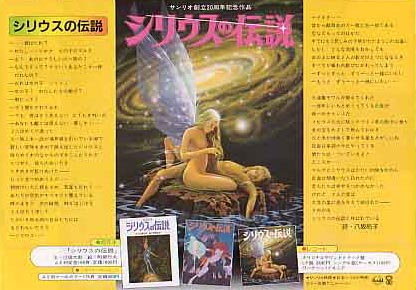
Contemporary poster advertising Sirius goods: picture book, film comic, and theme-song EP
|
Oshin
 | 
 |
 |
3/17/1984  Movie Movie  122 minutes 122 minutes  Sanrio Sanrio
|
| | HATA'S ROLE | |
Guest Key Animator of the doctor at Kagaya (click for 49 sec. Real Video clip)
|
| STAFF |
Producer: Tomioka Atsushi, Hatano Tsunemasa
Director: Yamamoto Eiichi
Music Director: Kobayashi Yutaka
Music: Sakata Kôichi
Storyboards: Endô Seiji, Dezaki Tetsu, Kagaya Susumu
Character Design: Sugino Akio
Animators: Akabori Mikiharu, Yuasa Nobuko, Kiyomizu Eizô, Ôsaka Takeshi, Matsuyama Maya, Endô Seiji
Guest Key Animators: Hata Masami (The doctor at Kagaya) and Yamamoto Shigeru (The mice at Oshin's house)
[ 1st 1/2 - Oshin's House]
Key Animation: Senda Yukinari, Gomachi Takeshi, Nakajima Kaoru, etc.
Effect Key Animation: Hoe Dan, Ônishi Tomoko
[ 2nd 1/2 - Nakagawa Lumber Shop & Shunsaku's Hut ]
Key Animation: Shibuichi Setsuko, Kawasuji Yutaka, Okura Mayumi, etc.
Layout: Kobayashi Yukari
Animation by Magic Bus
|
|
Animated version of a hit NHK live-action drama. Excellent background art and directing by YAMAMOTO Eiichi
bring to life this story set in the Meiji period about a young woman (she's a little girl in the anime) sent
away from home to work as a virtual slave to feed her family. Interestingly, most of the characters are played
by the actual actors from the live-action dorama, and the services of veteran character designer SUGINO Akio were
even sought out to model the character designs after their live counterparts. The voice track was pre-recorded, a
practice called 'presco' (for pre-scoring) which is extremely rare in anime. Isao Takahata used presco in the
Jarinko Chie movie, and Yamamoto used it in the Animerama films, but other than that there are few
examples. Oshin was Yamamoto's first big feature film (omitting his involvement in Yamato)
since the last Animerama film, The Belladonna of Sadness, in 1973. Besides the use
of presco, it is clear how much effort Yamamoto put into making Oshin a film which could stand on its own
separate from the TV series. Production quality is high and the film has a taut dramatic structure considering
the story was condensed from a long TV series.
Hata's character, the doctor, is on screen for only about 20 seconds about halfway through the film, but Hata
jam-packs the short scene with movement and humor, and creates a memorable character in seconds flat. Hata's
scenes in the Animerama films were similarly planned down to the smallest detail, and also featured characters
in meticulously thought-out comic sequences such as the one in this film. (I couldn't help thinking the doctor
resembles the coxswain on the boat in 1001 Nights when he laughs...) Indeed, this was the first time
since the Animerama films that Hata was given the chance to actually animate a character using the
"character system", rather than simply direct, so the doctor is that much more important as one of the few
characters created and animated by Hata himself. He can be viewed as a distillation of the essence of Hata's
style: a superb sense of comic timing, meticulous scene planning, and vigorously animated characters with plenty
of body movement and highly elastic facial expression.
|
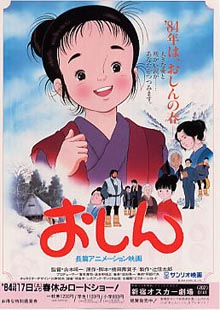
|
Button-nose from the Star of Dreams
 | 
 |
 |
10/19/1985 - 4/26/1986, Saturdays 7:00 - 7:30 PM  TV series TV series  26 episodes 26 episodes  Sanrio/TV Asahi Sanrio/TV Asahi
|
| | HATA'S ROLE |
Series Director
Episode Director & Storyboard:
#1: Welcome to Hookland
#2: Magic Gold Strawberry
#4: Scheme of the Bracelet Mother & Daughter
Episode Director:
#5: Forbidden Cave
#9: Honey Train of the Land of the Flowers
#14: Friendship Pendant
#20: Purin the Magic Girl
#25: Friend at Midnight
|
| STAFF | |
Producer: Hatano Tsunemasa, Nabejima Shinji (Asahi Hôsô)
Original Idea & Planning: Tomioka Atsushi (Sanrio)
Original Characters: Hiroshige Masayo
Character Design & Animation Director: Yamamoto Shigeru
Art Layout: Abe Yukio
Art: Kiyomizu Kazutoshi
Music: Tanaka Kôhei
Episode Directors: Hata Masami, Tanazawa Ryû, Koguma Kimiharu, Yamada Katsuhisa, Takagaki Kôzô
Written by: Takayashiki Hideo, Kaneharu Satoko, Terada Kenji
Storyboards: Tanazawa Ryû, Takeuchi Nobuo, Katô Yûji, Yamada Katsuhisa, Fukushima Kazumi, Takagaki Kôzô, Hirokawa Kazuyuki, Koguma Kimiharu
Animation Directors: Matsuyama Maya, Kobayashi Kazuyuki, Endô Yûichi, Ohara Shûichi
|
|
This is the only TV series Hata directed during his Sanrio period, and it was the first TV series directed by Hata since Make way for Master Kunimatsu 14 years earlier. A sampling of the first few episodes shows it to be of little distinction, with low production quality and little to appeal to anyone outside the intended age range of 3-7 year olds. This series began airing one week before the première of Florence, which Hata had been working on for the previous four years, and was presumably the first Sanrio animation produced subsequent to the closing of Sanrio's main studio, where Florence and everything preceding it had been animated. It represents the turning point in Sanrio's history where they switch tracks from large-scale feature films and start producing small-scale "character animation" shorts based on the Sanrio characters which have made the company a worldwide name.
|
|
Fairy Florence
(US: A Journey Through Fairyland)
 | 
 |
 |
10/26/1985  Movie Movie  92 minutes 92 minutes  Sanrio Eiga Sanrio Eiga
|
| | HATA'S ROLE | |
Director
|
| STAFF |
Executive Producer/Original Work: Tsuji Shintarô
Music Director: Yamamoto Naozumi
Producer: Tomioka Atsushi, Hatano Tsunemasa
Music Producer: Saitô Akira
Screenplay & Music Producer: Takabatake Kyû
Character Animation: Yamamoto Shigeru
Effect Animation: Akabori Mikiharu
Art Director: Abe Yukio
Photography Director: Yamaki Iwao
Editing: Yoshioka Satoshi
Editing Supervisor: Uraoka Keiichi
Audio Director: Iwata Hirokazu
Music Director: Masaki Rei
Music Mixer: Ôno Teruhiko
Sound Effects: Itô Katsumi, Imano Yasuyuki
Image Boards: Azuma Itsuko, Tsukasa Osamu, Miyamoto Sadao, Sabea Noma, Nakamura Yasutoshi, Hayakawa Keiji
Assistant Directors: Hirokawa Kazuyuki, Endô Seiji
Assistant Animation Directors: Ônishi Tomoko, Kubokawa Miaki
Director's Helper: Noguchi Yoshiaki
Arrangement "Brain": Yosue Machiko
Key Animation: Matsuyama Maya, Furuse Noboru, Notani Ritsuko, Gomura Takeshi, Kogawa Satoko, Nanke Kôji, Momose Yoshiyuki, Handa Teruo, Horiguchi Tadahiko, Hattori Michiko, Yasue Dan, Satô Yûzô, Senda Yukinari
Inbetweeners: Katayama Yûichi, Inoue Osamu, Wada Hisashi, Haga Hitoshii, Omura Masami, Nishibori Hiromi, Hattori Keiichirô, Ozawa Masashi, Kobayashi Kenji, Azuma Masako, Sakano Fusako, Shimura Yaeko, Fujii Takashi, Nakamura Ryûtarô, Kikuchi Jun, Gotô Yumi, Waratani Shinobu, Ôtani Miki, Kaneumi Yumiko, Hamano Kuniko, Narikawa Yôko
|
|
This film recounts the story of the impossible love of a human boy and a flower fairy against a backdrop of famous
classical pieces. The so-called 'leica reel' system was used in this movie; ie, the completed storyboard
was filmed and then screened with music to give an idea of the shape and flow of the film prior to beginning production.
Various artists including illustrator Itsuko Azuma, manga-ka Noma Sabea and ex-Mushi Pro animator Sadao Miyamoto were
hired to draw image boards prior to production to give the fairy world its form, and a famous music producer, Naozumi Yamamoto,
was hired to oversee the selection of classical pieces and conduct the Tokyo Philharmonic. Note a surprising face among the
inbetweeners: Ryûtarô Nakamura.
This is a delicate, gentle film aglow with emotion and filled with moments of sheer perfection unsurpassed in anime,
the story flows along intelligently with the music, and the directing by Hata is excellent. All the elements
combine to form something greater than the sum of its parts -- and I could go on about this extremely endearing
and never boring movie -- but ultimately, executive producer and writer Shintarô Tsuji's story is
blatantly derivative of Disney's Fantasia and Kenji Miyazawa's Gauche the Cellist (and probably other things), and unfortunately
that takes away considerably from Florence's merit as a film.
Nevertheless, the sheer beauty of the images and animation in Florence
are more than enough to make the film amply enjoyable in terms of visuals alone. Florence has a
secure place in anime history as a tour-de-force of full animation. All the cels in the film where hand-painted and
hand-traced, a practice which, if not already abandoned by the time the film was completed, was shortly supplanted for
automated methods of carrying out this time-consuming task. The number of man-hours which must have been spent on that aspect
of the animation alone is mind-boggling. It goes to reason that the film was 4 years in the making.
In short, it appears that, with about all the long-term budgetary planning of a kamikaze attack, Sanrio Films shoveled all their remaining
money into Florence and went out with a bang.
In his afterword to the film comic, Sanrio Executive Producer Shintarô Tsuji comes across as oddly embittered
about the whole Sanrio Eiga experience, noting how every one of Sanrio Eiga's films
had only put Sanrio further into the red. He relates how he was motivated to begin producing films at Sanrio 15
years before as a result of having seen and been amazed by Disney's Fantasia 20 years earlier as a child,
and having wanted to make a Japanese version of the film which would not only convey the wonder of full animation
to children but also of classical music, Florence being the result of that long-held dream and the ultimate
purpose of the founding of Sanrio Eiga.
Cel Count: ?
Production Length: 4 years
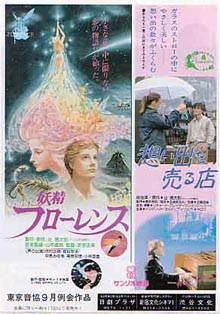
|
|
Super Mario Brothers: The Great Mission
to Rescue Princess Peach
 | 
 |
 |
7/20/1986  Movie Movie  60 minutes 60 minutes  Holly Planning Production/Grouper Production (distributed by Shôchiku Fuji) Holly Planning Production/Grouper Production (distributed by Shôchiku Fuji)
|
| | HATA'S ROLE | |
Director
|
| STAFF |
Original Work: Nintendo
Producer: Suzuki Masakatsu, Hatano Tsunemasa
Animation Director: Matsuyama Maya
Script: Takayashiki Hideo
Music: Kimori Toshiyuki
Art Director: Abe Yukio
Key Animation: Kadowaki Kôichi, Ogawa Tomoko, Takeda Kazuhisa, Koyama Ryô, Kishita Yoshio, Kusuda Satoru, Kodama Shunji, Kobayashi Akemi, Komamiya Shingo, Mitsueda Tadashi, Satô Atsushi, Takaoka Kiichi, Toshida Kazuyuki, Nakayama Katsuichi, Negishi Jirô, Hanawa Hiroaki, Yamazawa Minoru, Yamashita Satoru, Suzuki Eiji, Eguchi Takashi, etc.
|
|
This film appears never to have been released on video in or outside of Japan subsequent
to its theatrical release, making it probably the most elusive Hata film. (talk about
missed marketing opportunities!) This is doubly unfortunate because the film is in fact
given a fairly positive review in 70 Years of Theatrical Films, whose writers are
not prone to hyperbole. The closest thing available at this time is a film comic published
in Japan around the time of the theatrical release.
Although I don't know the specifics, the animation studio that produced this film, Grouper Productions,
was apparently some sort of re-incarnation of the old Sanrio Films studio. Most of the main staff members
like animation directors Maya Matsuyama, Shigeru Yamamoto and Mikiharu Akabori continued working together on
under this new umbrella. Hence, the Sanrio films produced hereon out were produced by Grouper Productions.
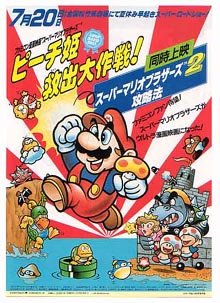
|
|
Nayuta
 | 
 |
 |
7/31/1986  OVA OVA  80 minutes 80 minutes  Toshiba EMI (distributed by Circus Productions) Toshiba EMI (distributed by Circus Productions)
|
| | HATA'S ROLE | |
Director
|
| STAFF |
Producer/Planning: Usami Yasushi
Character Design/Animation Director: Sugino Akio
Art Director: Abe Yukio
Original Work by Sasaki Junko
|
|
Apart from the short Sanrio "character anime" OVAs which Hata was involved in several years later, this was Hata's only OVA. Nayuta, a young high school student, rescues an ESPer mother and child and becomes involved in a struggle against aliens who hide a mysterious secret about the universe from humanity -- but for its own good, or to destroy it!? With Sugino Akio as the animation director, this shôjo anime could easily have become an interesting film, but the final product is difficult to follow and overall dissatisfying, with cheap-looking animation, an even cheaper synthesizer soundtrack, paper-thin characterization, etc. In close-ups, the character drawings suddenly become distinctly more detailed and unmistakably Sugino in style, but at other times the characters seem almost badly drawn. In short, a problematic late Hata film hampered by production quality... and story... and...
|
|
Nemo
 | 
 |
 |
7/15/1989  Movie Movie  94 minutes 94 minutes  Tokyo Movie Shinsha/Kinetics (distributed by Tôhô Tôwa) Tokyo Movie Shinsha/Kinetics (distributed by Tôhô Tôwa)
|
| | HATA'S ROLE |
Director (with William T. Hurtz)
Storyboard (with Tomizawa Nobuo, Tomonaga Kazuhide & Ôtsuka Yasuo)
|
| STAFF |
Producer: Fujioka Yutaka
Concept for screen: Ray Bradbury
Screenplay: Chris Columbus, Richard Outten
Based on the comic strip by Windsor McKay: Little Nemo in Slumberland
Music by Thomas Chase & Steve Rucker
Songs by Richard M. Sherman & Robert B. Sherman
Conceptual design: Jean "Moebius" Giraud
Design development: Brian Froud, Paul Julian, Tomonaga Kazuhide, Ken Mundie, Corney Cole, Tomizawa Nobuo
Animation directors: Tomonaga Kazuhide & Tomizawa Nobuo
Art director: Yamamoto Nizô
|
|
One of the biggest projects in anime history, Nemo was also one of the biggest disappointments. Production
began in 1982 and the film was not finished until 1989, with individuals such as Hayao Miyazaki and Osamu Dezaki becoming involved along the way
at various points only to drop out before actual production started. The project was producer Yutaka Fujioka's brainchild: His dream for years had
been to make a full-animated film which would be a hit in America. As the first step towards realizing this project, in 1977 he personally flew to Monterrey, CA to convince
McCay's descendents to allow him to obtain the film rights to McKay's comic strip, and the film was officially announced as a project in 1982. In
February of that year, the company TMS/Kinetographics was formed in America to produce Nemo, and the best staff from around the world were gathered
together to begin production. Among those scouted at this time were Ray Bradbury, who wrote the original scenario of the film, and Gary Kurtz (Star Wars), who was appointed producer of the
American production side. In August, a group of 14 Japanese animators including Yasuo Ôtsuka, Isao Takahata, Hayao Miyazaki, Yoshifumi Kondô and
Nizô Yamamoto flew to California to meet with the American production team, and while there attended lectures by famed Disney animators Frank Thomas
and Ollie Johnston. However, soon after this, first Miyazaki and then Takahata dropped out of the project. Essentially, Miyazaki was not interested in creating an animated film where everything
was a dream, and Takahata was more interested in creating a story depicting Nemo's growth as a boy (ie, à la Anne). Finally even Kurtz dropped out as producer in August 1984.
However, the first glimmer of hope for the project came in December 1984, when after 6 months of work Yoshifumi Kondo (director), Kazuhide Tomonaga (Animation director/E-konte/Key animation),
Nobuo Tomizawa (Key animation), Kyôko Tanaka (Key animation) and Nizô Yamamoto (Art director) completed the first
pilot, a 3 ½-minute film shot entirely in 70mm, full of impressive flight sequences that give Porco Rosso a run for its money.
It was glowingly praised by the American production side, and for the first time had the American staff and sponsors feeling the project might just be feasible. Unfortunately, Kondô was also to drop out in March
of 1985. Little progress was made until January 1988, when the many ideas pasted on the walls of the Los Angeles studio were whittled down in order to
create the storyboard from which the film would be made. It was at this point that Frank and Ollie recommended Bill Hurtz for the post of director, and that Masami Hata was
appointed director of the Japanese production side. Actual animation for the final film was commenced in June 1988, and 8 months later -- 2645 days since
the project was first launched -- Nemo was completed. Two other pilots exist: a 5-minute film by Sadao Tsukioka; and a 10 1/2-minute
film produced in 1987 by director Osamu Dezaki, animation director Akino Sugino, and art director Shichirô Kobayashi. (information
gathered from Nemo LD box and Sakuga Ase Mamire by Yasuo Ôtsuka)
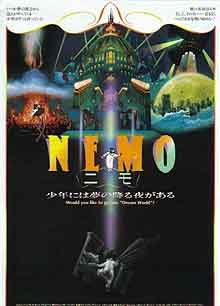
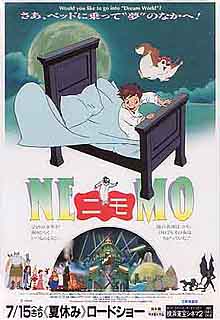
(pamphlets)
|
|
|
Sanrio World Masterpiece Movie Theater Trilogy #1
|
Hello Kitty's Cinderella
 | 
 |
 |
7/22/1989  Movie Movie  30 minutes 30 minutes  Sanrio (distributed by Tôhô) Sanrio (distributed by Tôhô)
|
| | HATA'S ROLE | |
Series Director
|
| STAFF |
Series Production Supervisor: Tsuji Shintarô
Director: Kohanawa Tameo
Animation Director: Matsuyama Maya
Screenplay: Kaneharu Tomoko
Music: Aoki Nozomu
Art: Abe Yukio
Voice Actors: Koyama Mami, Shiozawa Kaneto, Tomoe Shigeko, Ukai Rumiko, Yamada Eiko, Asô Miyoko, etc.
|
|
Sanrio Anime Festival triple-feature #1.
Hello Kitty's Cinderella was released together with the next two films as a 'triple feature' in what was
called the "Sanrio Anime Festival" (apparently renamed "Sanrio World Masterpiece Movie Theater" starting with the 1990 trilogy). Two more of these 'triple-features' were released over the next two years. Hata is
credited as Soukantoku or series general director of every film. Additionally, he directed one film in
each trilogy (Three Musketeers, Blue Bird and Journey to the West), and wrote the screenplay of two of the films
(Three Musketeers and Magic Forest).
** Note that Hata was credited as director or series director in most of the Sanrio "character anime" which
have been appearing since 1990 in every format, but I'm not about to start to including those.
|
|
Kiki and Lala's Blue Bird
 | 
 |
 |
7/22/1989  Movie Movie  60 minutes 60 minutes  Sanrio (distributed by Tôhô) Sanrio (distributed by Tôhô)
|
| | HATA'S ROLE | |
Director, Series Director
|
| STAFF |
Series Production Supervisor: Tsuji Shintarô
Animation Director: Matsuyama Maya, Akabori Mikiharu
Screenplay: Terada Shinji
Music: Satô Toshihiko
Art: Abe Yukio
Original Work: Maurice Maeterlinck's play The Blue Bird
Voice Actors: Toda Keiko, Saitô Hiromi, Furuya Tôru, Tsuru Hiromi, Yoshida Rihoko, etc.
|
|
Hata's directing contribution to #1.
At twice the length of the other two items on the docket, this film was obviously the main attraction of the first of the 'Sanrio WMT' triple-features. The film is aimed at a very young audience, but it is quite carefully crafted, and the rich visuals do a fine job of bringing to life Maeterlinck's fantasy world. This sort of pizzaz is lacking in Hata's later film in the series, Three Musketeers, in comparison with which Blue Bird seems more rewarding, at least visually. The subject matter also seems better attuned to Hata's talents, with a situation similar to that in Fairy Florence.
|
|
My Melody's Little Red Riding-Hood
 | 
 |
 |
7/22/1989  Movie Movie  30 minutes 30 minutes  Sanrio (Tôhô) Sanrio (Tôhô)
|
| | HATA'S ROLE | |
Series Director
|
| STAFF |
Series Production Supervisor: Tsuji Shintarô
Director: Kubo Hidemi
Animation Director: Matsuyama Maya, Suzuki Yasuhiko
Screenplay: Takayashiki Hideo
Music: Kitayama Yoshi (or Miyamoto Ichi)
Art: Abe Yukio
Voice Actors: Sakuma Rei, Nakao Ryûsei, Takiguchi Junpei, Ogai Yôko, etc.
|
|
|
|
Tezuka Osamu story: I'm Songokû
 | 
 |
 |
8/27/1989 Sunday, 10:00 - 11:25 AM  TV special TV special  70 minutes 70 minutes  Tezuka Productions/Nihon TV Tezuka Productions/Nihon TV
|
| | HATA'S ROLE |
Director (with Rin Tarô)
Screenplay (with Rin Tarô, Yamashita Kunimasa) |
| STAFF |
Producer: Takei Hidehiko & Norimizu Hoseki (for Nihon TV), Matsutani Masataka & Nagai Shûho (for Tezuka Production)
Directed by: Rin Tarô (part 1) / Hata Masami (part 2)
Animation Director/s: Momose Yoshiyuki (part 1) / Akabori Mikiharu & Matsuyama Maya (part 2)
Written by: Yamashita Kuniaki, Hata Masami, Rin Tarô
Character Design: Tezuka Osamu (from Boku no Songokû), Momose Yoshiyuki, Matsuhara Norihiro
Art Director: Kanemura Masayoshi
Music: Maruyama Haruhiko
Director's Assistant: Urabatake Tatsuhiko
Key animation (part 1): Noda Takuo, Arakawa Nobumasa, Satô Yûzô, Sakurai Kunihiko, Kurihara Reiko, Motoki Kune, Inaya Yoshinobu, Umeno Kaoru, Eda Reiko, Hiraishi Motoko, Momose Yoshiyuki
Key animation (part 2): Kondô Hiroyuki, Mitsuoka Seiichi, Inoue Ei, Matsuyama Maya, [?], Matsumoto Masako, Asahi Miwako, Matsuhara Norihiro, Shinozaki Toshikatsu, Okawa Chiko, Okuyama Kenji, Yamauchi Tomio, Mizuta Megumi
|
|
Hata's only TV special. Tezuka Osamu was on his deathbed at the time this was in
production. He died before it was released, making this one of his posthumous works. A series
called "Love will save the Earth" showed Tezuka TV specials regularly for over a decade, and this was last of them.
The first half of this film tells the story of how Tezuka saw a Chinese animation of "Journey to
the West" and gained an interest in animation from it. The first half ends with Tezuka meeting
the director of this movie many years later in China, then launching into Tezuka's own animated
sci-fi version of this story.
Shiozawa Kaneto (Sanzô) and Koyama Mami (Rura) deliver delightful performances in this half,
and Tezuka's humor is captured in several instances. The first half was directed by Rin Tarô
and produced by Madhouse, and is characterized by its ultra-clean look, which was apparently acheived by
doing all the animation on some special kind of cel. The second half was directed by Hata and produced
by Grouper Pro, the studio created in the wake of the closing of Sanrio Films.
Animated in a more conventional manner, it suffers in contrast to the visually
polished first half, but despite the low production quality and undistinguished story,
the light-hearted atmosphere and memorable characters in the second half make it a peculiarly irresistible gem.
The contrast in directing styles could not be more striking. Rintarô is all about framing, strange camera angles
and special effects, the narrative focused on the "now", the animation being more realistic and alternating between highly fluid and large swaths of still frames,
while Hata is all about character animation and linear dramatic flow, distribution of animation being more even and
the characters more 'cartoony'. Along with SUGII Gisaburô and YAMAMOTO Eiichi, both Rin and
Hata were higher-ranking directors in the heydey of Mushi Pro back in the 60s, and each of these directors
established his own style in the various TV series he directed there, with Gokû representing the
Sugii style, Kimba the Yamamoto Eiichi style, Sabu to Ichi Torimonohikae the Rin style, and
Andersen the Hata style. The effect of the dual structure of the film is to make it feel like an overt
homage to these directors' days at Mushi Pro; indeed, the second half by Hata is something of a throwback to the
style of the old Gokû, which Hata put his own stamp on in the episodes he directed. Twenty years
after these two directors were given their first job in anime under Tezuka, they returned to co-direct this film
on the occasion of Tezuka's death.
It's a fitting homage. Worthy of note is the fact that Hata's longtime Sanrio associates Mikiharu Akabori and
Maya Matsuyama were the animation directors for his portion of the film. Akabori's last co-credit with Hata is
in Fairy Dick (1992), produced a year after he and Hata left Sanrio (?) following the third and last
of the Summertime "Sanrio World Masterpiece Movie Theater" triple features released 1989-1991.
|
|
Pokopon's merry Journey to the West
 | 
 |
 |
7/21/1990  Movie Movie  40 minutes 40 minutes  Sanrio (distributed by Tôhô) Sanrio (distributed by Tôhô)
|
| | HATA'S ROLE | |
Director, Series Director
|
| STAFF |
Series Production Supervisor: Tsuji Shintarô
Screenplay: Terada Kenji
Animation Directors: Akabori Mikiharu, Monkyô Kôichi
Music: Kanezaki Jun'ichi
Voice Actors: Tanaka Mayumi, Kyôda Hisako, Futamata Issei, Nakao Ryûsei, Genda Tesshô, etc.
|
|
Hata's directing contribution to #2.
Again, great visuals rescue this film from descending to the level of mere 'kidsch'.
This was Hata's third anime adaptation of the famous Chinese legend, and it dates
only a year after the second, I'm Songokû, a TV special which he co-directed with Rin Taro.
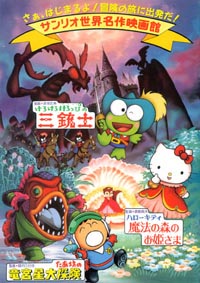
|
|
|
Sanrio WMT Trilogy #3 |
Kerokero Keroppi's Three Musketeers
 | 
 |
 |
7/20/1991  Movie Movie  60 minutes 60 minutes  Sanrio (distributed by Tôhô) Sanrio (distributed by Tôhô)
|
| | HATA'S ROLE | |
Director, Screenplay, Series Director
|
| STAFF |
Series Production Supervisor: Tsuji Shintarô
Animation Directors: Matsuyama Maya, Monkyô Kôichi, Owada Yoshihiro
Art: Abe Yukio
Voice Actors: Matsuo Yoshiko, Matsui Naoko, Nakao Ryûsei, Ôki Tamio, Miura Masako, etc.
|
|
Sanrio Anime Festival triple-feature #3. Hata's directing contribution to #3.
Three Musketeers contains Hata's most substantial artistic contribution to this series, with Hata acting as supervising director and director and screenwriter of the film itself. The film is well structured dramatically, and received good reviews in Animage when it was released, but there is only so much you can do with Sanrio's characters and style, and as a result the film is ultimately for children and leaves a slight impression.
|
|
Taa-Bô's great exploration of the dragon star
 | 
 |
 |
7/20/1991  Movie Movie  34 minutes 34 minutes  Sanrio (distributed by Tôhô) Sanrio (distributed by Tôhô)
|
| | HATA'S ROLE | |
Series Director
|
| STAFF |
Series Production Supervisor: Tsuji Shintarô
Director: Mitsuki Mikkao
Screenplay: Iida Jôji
Animation Directors: Matsuyama Maya, Monkyô Kôichi, Owada Yoshihiro
Voice Actors: Takagi Sanae, Suzuki Mie, Mitsuda Yûko, Genda Tesshô, Tomita Kôsei, etc.
|
|
|
|
Let's Go! Inacchû Ping Pong Club
 | 
 |
 |
4/5/1995 - 9/27/1995  TV series TV series  26 episodes 26 episodes  Kitty Films/TBS Kitty Films/TBS
|
| | HATA'S ROLE |
Series Director
Storyboard
#16 part A & B: Doctor Maeno
|
| STAFF |
Based on a manga by Furuya Minoru (serialized in Young Magazine, published by Kodansha)
Series Structure: Tomita Sukehiro
Character Design: Tanaka Jôji
|
|
Based on a 17-volume manga about the adventures of a middle school table-tennis club,
Inachu marks Hata's return to comedy, and holds the distinction of being the uncontested king of gross-out anime.
Scrupulously reproducing the distinctive drawing style which was the essence of this cult manga, Hata
succeeded in transferring the parodic atmosphere of the manga to the screen, and Inachu is his triumph of the 1990s.
The manga artist's genius for charicature is reflected in the anime, where the faces of the characters
are manipulated to great effect in the many tirelessly imaginative stunts and parody sequences which
litter each episode.
Combined with this visual prowess is a vein of humor the likes of which has never been seen before in anime, by turns sarcastic, shockingly distasteful, usually extremely funny.
Inachu was released in part in the US, where it met a surprising degree of success among more adventurous fans.
DVDs of the rest of the series now appear forthcoming.
The quality of the scriptwriting went down a little near the end, near which two episodes
appear to have been written by someone who never read the manga, but otherwise this is
a very funny series which maintains a high level of quality and shines on still today as a beacon of eccentricity.
There is what you might call the Hata trademark in the one episode Hata storyboarded: a sequence of stills
taken from earlier in the episode flashed by at a quick clip. The same effect can be seen in episode 9 of Gokû's Big Adventure
broadcast back in 1967.
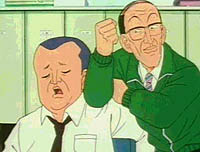  Guess who? |
|
Anime: Seen on TV!! Tamagocchi
 | 
 |
 |
7/7/1997 - 3/21/1998, Mondays 7:56 - 8:00 PM  TV series TV series  27 episodes 27 episodes  WIZ/Studio Gallop/Fuji TV WIZ/Studio Gallop/Fuji TV
|
| | HATA'S ROLE |
Series Director
Episode Director, Storyboard: #1-27
|
| STAFF |
Producer (Fuji TV): Ishii Kôji
Art Director: Mitsui Hideki
Character Design: Watanabe Kenji
Music: Wada Kaoru
Voices:
Takeuchi Junko etc.
|
|
A mini series based on the 'electronic animal' which was a fad in Japan amongst the younger set a few years back.
Each episode is only 1 minute long, and there is no (intelligible) dialogue.
The producer reportedly said that dialogue was intentionally omitted in the hope of marketing the series overseas, though ironically it never was.
Hata was probably called in due to his extensive experience animating character-based products at Sanrio,
and he would appear to have exercised more complete control over this series than any other he directed, directing and writing the storyboard of every episode.
In Japan, one VHS tape entitled Bideo de hakken!! Tamagocchi was released. It contains the movie Tamagocchi: Honto no hanashi and 9 episodes from the TV series. (Bandai Visual, 11/25/1997, YYV-121, ¥2,500, sleeve)
In the US, one VHS tape entitled Tamagotchi Video Adventures was released in 1998. It contains the movie and other lame crap, but no TV episodes. (sleeve)
|
|
|



 TV series
TV series  52 episodes
52 episodes  Mushi Productions/Fuji TV
Mushi Productions/Fuji TV


 TV series
TV series  39 episodes
39 episodes  Mushi Productions/Fuji TV
Mushi Productions/Fuji TV


 TV series
TV series  52 episodes
52 episodes  Mushi Productions/Fuji TV
Mushi Productions/Fuji TV


 TV series
TV series  35 episodes
35 episodes  Mushi Productions/Fuji TV
Mushi Productions/Fuji TV


 TV series
TV series  27 episodes
27 episodes  Mushi Productions Business Division/Fuji TV
Mushi Productions Business Division/Fuji TV


 Movie
Movie  128 minutes
128 minutes  Mushi Productions (distributed by Nihon Herald Eiga)
Mushi Productions (distributed by Nihon Herald Eiga)


 TV series
TV series  79 episodes
79 episodes  Mushi Productions/Fuji TV
Mushi Productions/Fuji TV


 Movie
Movie  112 minutes
112 minutes  Mushi Productions (distributed by Nihon Herald Eiga)
Mushi Productions (distributed by Nihon Herald Eiga)


 TV series
TV series  52 episodes
52 episodes  Mushi Productions/Fuji TV
Mushi Productions/Fuji TV


 TV series
TV series  46 episodes
46 episodes  Mushi Productions/Fuji TV
Mushi Productions/Fuji TV


 TV series
TV series  26 episodes
26 episodes  Mushi Productions/Kansai TV
Mushi Productions/Kansai TV


 TV series
TV series  52 episodes
52 episodes  Tokyo Movie Shinsha/Fuji TV
Tokyo Movie Shinsha/Fuji TV


 TV series
TV series  26 episodes
26 episodes  Tokyo Movie Shinsha/Mainichi Hôsô (MBS)
Tokyo Movie Shinsha/Mainichi Hôsô (MBS)


 TV series
TV series  27 episodes
27 episodes  Tokyo Movie Shinsha/Nihon TV
Tokyo Movie Shinsha/Nihon TV


 TV series
TV series  77 episodes (2x15 minute stories)
77 episodes (2x15 minute stories)  Tokyo Movie Shinsha/TV Asahi
Tokyo Movie Shinsha/TV Asahi


 TV series
TV series  27 episodes
27 episodes  Tôei Dôga/Fuji TV
Tôei Dôga/Fuji TV


 Movie
Movie  28 minutes
28 minutes  Sanrio (distributed by Tôhô Tôwa)
Sanrio (distributed by Tôhô Tôwa)


 Movie
Movie  46 minutes
46 minutes  Sanrio (distributed by Nihon Herald Eiga)
Sanrio (distributed by Nihon Herald Eiga)


 TV series
TV series  43 episodes
43 episodes  MK/NHK
MK/NHK


 Pilot film
Pilot film  26 minutes
26 minutes  Sanrio/assistance from Tezuka Productions
Sanrio/assistance from Tezuka Productions


 Movie
Movie  108 minutes
108 minutes  Sanrio
Sanrio


 Movie
Movie  108 minutes
108 minutes  Sanrio (distributed by Sanrio/Nihon Herald Eiga)
Sanrio (distributed by Sanrio/Nihon Herald Eiga)


 Movie
Movie  122 minutes
122 minutes  Sanrio
Sanrio


 TV series
TV series  26 episodes
26 episodes  Sanrio/TV Asahi
Sanrio/TV Asahi


 Movie
Movie  92 minutes
92 minutes  Sanrio Eiga
Sanrio Eiga


 Movie
Movie  60 minutes
60 minutes  Holly Planning Production/Grouper Production (distributed by Shôchiku Fuji)
Holly Planning Production/Grouper Production (distributed by Shôchiku Fuji)


 OVA
OVA  80 minutes
80 minutes  Toshiba EMI (distributed by Circus Productions)
Toshiba EMI (distributed by Circus Productions)


 Movie
Movie  94 minutes
94 minutes  Tokyo Movie Shinsha/Kinetics (distributed by Tôhô Tôwa)
Tokyo Movie Shinsha/Kinetics (distributed by Tôhô Tôwa)


 Movie
Movie  30 minutes
30 minutes  Sanrio (distributed by Tôhô)
Sanrio (distributed by Tôhô)


 Movie
Movie  60 minutes
60 minutes  Sanrio (distributed by Tôhô)
Sanrio (distributed by Tôhô)


 Movie
Movie  30 minutes
30 minutes  Sanrio (Tôhô)
Sanrio (Tôhô)


 TV special
TV special  70 minutes
70 minutes  Tezuka Productions/Nihon TV
Tezuka Productions/Nihon TV


 Movie
Movie  40 minutes
40 minutes  Sanrio (distributed by Tôhô)
Sanrio (distributed by Tôhô)


 Movie
Movie  20 minutes
20 minutes  Sanrio (distributed by Tôhô)
Sanrio (distributed by Tôhô)


 Movie
Movie  40 minutes
40 minutes  Sanrio (distributed by Tôhô)
Sanrio (distributed by Tôhô)


 Movie
Movie  60 minutes
60 minutes  Sanrio (distributed by Tôhô)
Sanrio (distributed by Tôhô)


 Movie
Movie  34 minutes
34 minutes  Sanrio (distributed by Tôhô)
Sanrio (distributed by Tôhô)


 Movie
Movie  34 minutes
34 minutes  Sanrio (distributed by Tôhô)
Sanrio (distributed by Tôhô)


 TV series
TV series  26 episodes
26 episodes  Marubeni/Zuiyô/Grouper Pro/NHK Satellite BS2
Marubeni/Zuiyô/Grouper Pro/NHK Satellite BS2


 TV series
TV series  26 episodes
26 episodes  Kitty Films/TBS
Kitty Films/TBS


 Movie
Movie  40 minutes
40 minutes  Sanrio
Sanrio


 Movie
Movie  30 minutes
30 minutes  Sanrio
Sanrio


 TV Series
TV Series  46 episodes
46 episodes  Eiken/Fuji TV
Eiken/Fuji TV


 Movie
Movie  98 minutes
98 minutes  Elmer's Adventure Production Committee (distributed by Shôchiku)
Elmer's Adventure Production Committee (distributed by Shôchiku)


 TV series
TV series  27 episodes
27 episodes  WIZ/Studio Gallop/Fuji TV
WIZ/Studio Gallop/Fuji TV


 TV series
TV series  26 episodes
26 episodes  Pastel/Fuji TV
Pastel/Fuji TV


 TV series
TV series  Currently airing?
Currently airing?  Studio Gallop/NHK Educational TV
Studio Gallop/NHK Educational TV


 TV series
TV series  21 episodes
21 episodes  Sunrise
Sunrise


 TV series
TV series  [Currently airing]
[Currently airing]  Sunrise
Sunrise




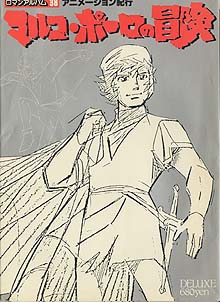







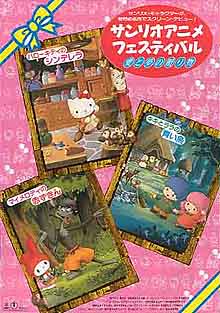


 Guess who?
Guess who?